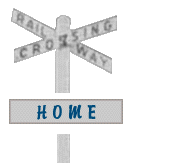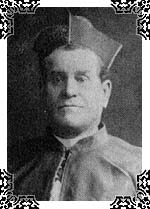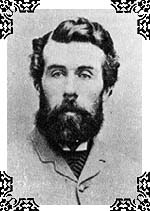









The history of the Roman Catholic church on the Island is as long as that of European settlement. The Mi'Kmaq native peoples had already been visited by missionaries when the first French colonists and Acadians arrived in 1720. Between 1720 and 1758, when the colony was called L'Ile-St-Jean and was a French possession, the Roman Catholic church was the only religious institution here. Even after the British assumed control of the colony, Roman Catholic churches continued to appear. A Catholic chapel had been raised in the New London area prior to 1774, as many French had settled there to work the rich fishing grounds.
From its inception until well into the twentieth century, St. Mary's in Indian River was the Catholic church closest to Kensington, and town residents took an active role in its parish community. The first Indian River church was built in 1815 near the waters of Malpeque Bay. One of the graves next to this modest frame structure was that of Thomas Barrett, an early Irish settler from whom Kensington at one point took its name, Barrett's Cross.
In 1842, Father James MacDonald took over the
position of resident priest and, deciding that the parish
had outgrown its original home, he forged ahead with the
building of a new church and parochial house. The new
house of worship was dedicated to The Blessed Virgin Mary
and it was sometimes called "St Mary's of the
Pines," a reference perhaps to the fourteen-inch
square timbers that comprised the frame. An imposing
edifice for its time, the church was opened and dedicated
on June 20, 1843, in the first such ceremony ever held on
the Island. "St. Mary's of the Pines" served  as the
focal point for Catholic worship in the area for over
fifty years. However, on August 4, 1896, as the Rev.
Msgr. D. J. Gillis sat on the parish house veranda
reciting the rosary, the church was struck by lightning
and its wood construction was immediately ablaze. Even
though the building was in danger of collapsing, Father
Gillis and a passerby, T. A. Driscoll, both ran into the
church to save the sacred vessels and the statue of Our
Lady. For those who might think it strange that the
church burned even as the rosary was being said, it is
also claimed that-- as soon as the statue was saved-- the
fire progressed no further.
as the
focal point for Catholic worship in the area for over
fifty years. However, on August 4, 1896, as the Rev.
Msgr. D. J. Gillis sat on the parish house veranda
reciting the rosary, the church was struck by lightning
and its wood construction was immediately ablaze. Even
though the building was in danger of collapsing, Father
Gillis and a passerby, T. A. Driscoll, both ran into the
church to save the sacred vessels and the statue of Our
Lady. For those who might think it strange that the
church burned even as the rosary was being said, it is
also claimed that-- as soon as the statue was saved-- the
fire progressed no further.
Although upset by this severe loss, the Rev.
Gillis soon began making plans to rebuild, and aimed to
construct the most beautiful church possible. Most who
have seen St. Mary's Church in Indian River-- completed
in 1902 and still standing today-- agree that he
succeeded in this aim, as the church is generally
considered one of the Island's foremost architectural
landmarks. Like St.
Mark's Anglican in Kensington, the
new St. Mary's was designed by famed Island architect
William Critchlow Harris, and is the largest wooden
church in the province. Its interior  design features
characteristic elements of the French Gothic style, such
as a unified nave and chancel (the nave
is the congregational seating, the chancel
is the clergy and choir area) and a
high vaulted ceiling with dark cherry-wood ribs. The
exterior of the church is dominated by the cylindrical,
128-foot tower on the northwest corner, with niches at
its base containing statues of the twelve apostles. Also
remarkable are the differently- patterned layers of
shingles which encircle the church. But Harris' greatest
achievement at Indian River was perhaps not so much
visual as auditory. At this stage of his career, Harris
was preoccupied with acoustical perfection and
meticulously designed the interior for the five organs
that were to be placed in the church, with the main one
located in the choir loft. Today, Islanders and visitors
alike flock to St. Mary's for the summer concert
festival, where its walls ring with classical and
traditional music. Unfortunately, the main church is only
used for the summer months; over the past decades, the
upkeep and heating of the church has become too heavy a
burden for the small parish to support alone. A group has
been formed to try and save this architectural
masterpiece from the ravages of time and
design features
characteristic elements of the French Gothic style, such
as a unified nave and chancel (the nave
is the congregational seating, the chancel
is the clergy and choir area) and a
high vaulted ceiling with dark cherry-wood ribs. The
exterior of the church is dominated by the cylindrical,
128-foot tower on the northwest corner, with niches at
its base containing statues of the twelve apostles. Also
remarkable are the differently- patterned layers of
shingles which encircle the church. But Harris' greatest
achievement at Indian River was perhaps not so much
visual as auditory. At this stage of his career, Harris
was preoccupied with acoustical perfection and
meticulously designed the interior for the five organs
that were to be placed in the church, with the main one
located in the choir loft. Today, Islanders and visitors
alike flock to St. Mary's for the summer concert
festival, where its walls ring with classical and
traditional music. Unfortunately, the main church is only
used for the summer months; over the past decades, the
upkeep and heating of the church has become too heavy a
burden for the small parish to support alone. A group has
been formed to try and save this architectural
masterpiece from the ravages of time and  weather. Hopefully, the
same indomitable spirit that raised the original $20,000
to build the church will prevail, and this monument to
faith and the local community will stand for generations
to come.
weather. Hopefully, the
same indomitable spirit that raised the original $20,000
to build the church will prevail, and this monument to
faith and the local community will stand for generations
to come.
With a seating capacity of 600, there was plenty of room for Kensington residents at St. Mary's Church. Nevertheless, difficult traveling in the winter and a desire to have their own place of worship led residents to explore other venues for Catholic mass. By 1906, members of the Catholic Mutual Benevolent Society decided that they would construct a hall, and a chapel was constructed on its second floor. The pastor in Indian River, Msgr. Gillis, would travel into town to offer mass. But on Saturday, December 7, 1928, the CMBA hall went ablaze and, despite the best efforts of the parishioners, little else was saved but the pews and the stations of the cross. However, since there were no telephones in Indian River at the time, Father Gillis was not made aware of the destruction of the hall. At Sunday celebration the next day in Indian River, he announced that mass would be held in Kensington the following Sunday at 10:00 a.m., whereupon a parishioner promptly stood up and told him that there was no longer any hall in which to hold mass. More than a bit flustered, and struggling to find his composure, Father Gillis replied that yes, yes, he had expected this all along and-- on second thought-- mass would probably be held at Indian River the following Sunday.
 After
the fire, masses were then held at the Temperance Hall
until 1937, when a new church was built in Kensington.
Constructed during the pastorate of Father Reginald
MacDonald, the new place of worship was built on land
owned by the CMBA, and when finished, was consecrated in
the name of the Holy Family. The architect who designed
the impressive structure was James Harris of
Charlottetown. The parish community banded together and
made considerable offerings towards the furnishing of the
church interior. Made in the memory of lost loved ones,
some of these donations included the altar, the
tabernacle, a stained glass window portraying the Holy
Family, chalices, and even a handmade crocheted altar
cloth. All gave what they could to create a beautiful
house of worship for Catholics in Kensington. Today, this
wooden church continues to be both an architectual
landmark and active faith community in the town,
continuing the more than 200 year history of the Catholic
church in the area.
After
the fire, masses were then held at the Temperance Hall
until 1937, when a new church was built in Kensington.
Constructed during the pastorate of Father Reginald
MacDonald, the new place of worship was built on land
owned by the CMBA, and when finished, was consecrated in
the name of the Holy Family. The architect who designed
the impressive structure was James Harris of
Charlottetown. The parish community banded together and
made considerable offerings towards the furnishing of the
church interior. Made in the memory of lost loved ones,
some of these donations included the altar, the
tabernacle, a stained glass window portraying the Holy
Family, chalices, and even a handmade crocheted altar
cloth. All gave what they could to create a beautiful
house of worship for Catholics in Kensington. Today, this
wooden church continues to be both an architectual
landmark and active faith community in the town,
continuing the more than 200 year history of the Catholic
church in the area.
